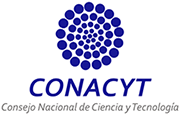Viabilidad sociocultural de la vivienda vertical social. Ciudad Juárez, densificación sustentable de una ciudad fronteriza
DOI:
https://doi.org/10.20983/decumanus.2022.1.1Palabras clave:
vivienda social, densidad, habitabilidad, ciudades fronterizas, Ciudad JuárezResumen
Se presenta un estudio cualitativo que indaga sobre las cualidades de la vivienda social adecuada y habitable. En México, las políticas de vivienda social se debaten actualmente entre la necesidad de promover la ciudad compacta y la adecuación cultural a este modelo, como reconocimiento de las diferencias socioculturales en las formas de habitar. Para estimular la compacidad de unmodo sustentable socioculturalmente, sin menoscabo de la habitabilidad, es necesario considerar el contexto, las preferencias y estilos de vida de los habitantes, como paso esencial para no solo construir vivienda social, sino además promover comunidades habitables. En ese sentido, se presenta un estudio cualitativo desarrollado a partir de la aplicación de una encuesta, que busca evaluar si es sustentable socioculturalmente el fomento de la densificación, así como identificar criterios de diseño urbano y arquitectónico adecuados a las preferencias de habitar y estilos de vida de los habitantes. Tomamos como caso de estudio los principales conjuntos con tipologías de vivienda vertical social existentes en Ciudad Juárez, Chihuahua, la segunda más grande ciudad fronteriza del norte de México, donde las políticas de impulso a la compacidad han sido recibidas con escepticismo, bajo el argumento de que los fronterizos tienen un apego a la vivienda unifamiliar con patio. El aporte del trabajo radica en la contribución al tema de promover comunidades compactas y habitables, desde la consideración de la vivienda adecuada socioculturalmente; lo que puede afinar los mecanismos para adoptar esta estrategia en el marco del programa de vivienda social en ciudades de esta región fronteriza, y en otras localidades donde pueda replicarse el estudio.
Descargas
Citas
Berke, P. R., Godschalk, D. R., Kaiser, E. J., & Rodríguez, D. A. (2006). Urban Land Use Planning (5th ed.). United States: University of Illinois Press.
Conapo. (2018). Sistema Urbano Nacional 2018. Obtenido de Consejo Nacional de Población: https://www.gob.mx/cms/uploads/attachment/file/400771/SUN_2018.pdf
Duany, A., Sorlien, S., & Wright, W. (2012). SmartCode: Version 9.2. Miami: e Town Paper Publisher.
Duany, A., Speck, J., & Lydon, M. (2010). e Smart Growth Manual. McGraw Hill: New York.
Gomez, J., & Mesa, A. (2017). Determinación de densidades urbanas sostenibles en base a metodología relativa al acceso solar: caso área metropolitana de Mendoza, Argentina. Revista de Urbanismo, (36).
Hernández, R., Fernández Collado, C., & Baptista Lucio, P. (2010). Metodología de la investigación. Ciudad de México, DF: McGrawHill (5º edición).
IMIP. (2010). Plan de Desarrollo Urbano Ciudad Juárez 2010. Ciudad Juárez: Instituto Municipal de Investigación y Planeación / Periodico Oficial del Gobierno del Estado Libre y Soberano de Chihuahua. Obtenido de: https://www.imip.org.mx/imip/files/planes/PLAN_DES_URBANO_CENTRO_POBLACION_JUAREZ_2010.pdf
IMIP. (2016). PDUS Plan de Desarrollo Urbano Sostenible Ciudad Juárez 2016. Ciudad Juárez: Instituto Municipal de Investigación y Planeación y Ayuntamiento de Juárez.
Inegi. (2010). Censo de población y vivienda 2010. Obtenido de Instituto Nacional de Estadística y Geografía: https://www.Inegi.org.mx/programas/ccpv/2010/
Inegi. (2016). Inventario Nacional de Vivienda 2016. Obtenido de Instituto Nacional de Estadística y Geografía: https://www.Inegi.org.mx/app/mapa/inv/
Inegi. (2020). Censo de población y Vivienda 2020. Obtenido de Instituto Nacional de Esta- dística y Geografía: https://www.Inegi.org.mx/programas/ccpv/2020/
Jenks, M. (2006). City Form: e Sustainable Urban Form Consortium. Architectural/Planning Research and Studies.
Karn, R. J. (1961). A study of Low-Rise, High-Density Housing. Massachussetts: Massachusetts Institute of Technology, Department of Architecture.
Maycotte, E., & Sanchez, E. (2010). Ciudades dispersas, viviendas abandonadas: la política de vivienda y su impacto territorial y social en las ciudades mexicanas. ACE: Architec-tures, City and Environment, 5 (14) 19-32. Recuperado: https://upcommons.upc.edu/bitstream/handle/2099/9342/ACE_14_SA_11.pdf?sequence=7&isAllowed=y
Moughtin, C., & Shirley, P. (2005). Urban Design: Green Dimensions. Oxford: Architectural Press / Elsevier.
Naciones Unidas. (2017). Nueva Agenda Urbana. Quito: Naciones Unidas, Secretaría de Hábitat III.
Rodríguez, M., & Sánchez, E. (2020). Densificación sustentable y habitable. Viabilidad urbana, económica y sociocultural. Ciudad de México: Colofón Ediciones Académicas.
Rueda, S. (2017). El urbanismo ecológico. Barcelona: Agència d’Ecologia Urbana de Barcelona.
Sánchez, E., & Rodríguez, M. (2017). Spatial suitability for urban sustainable densification in a borderland city. Journal of Geography and Regional Planning, 10(10), 266-277.
Sánchez, E., Maycotte, E., & Chávez, J. (2016). Spatial patterns of social mobility perception derived from access to social housing in a Mexican border city. Proceedings of the 11th International Congress on Virtual Cities and Territories (págs. 1326-1345). Barcelona: Centre de Política de Sòl i Valoracions.
Sedatu. (2019). Reglas de Operación del Programa de Mejoramiento Urbano, para el ejer- cicio fiscal 2019. Obtenido de Secretaría de Gobernación: Diario Oficial de la Federación de 28/02/2019:
https://www.dof.gob.mx/nota_detalle.php?codigo=5551575&fecha=28/02/2019
Sedatu-Conavi. (2015). Reglas de Operación del Programa de Acceso al Financiamiento para Soluciones Habitacionales, del ejercicio fiscal 2016. Obtenido de Secretaría de Gobernación. Diario Oficial de la Federación de 29/12/2015: https://dof.gob.mx/nota_detalle.php?codigo=5421623&fecha=29/12/2015
Sedatu-Conavi. (2018). Modelo geoestadístico para la actualización de los perímetros de contención urbana. Obtenido de Comisión Nacional de Vivienda:
Sedatu-Conavi. (2019). Criterios técnicos para una vivienda adecuada. Obtenido de Secretaría de Desarrollo Agrario, Territorial y Urbano: https://www.gob.mx/sedatu/docu-mentos/criterios-tecnicos-para-una-vivienda-adecuada
Publicado
Cómo citar
Número
Sección
Licencia
Derechos de autor 2022 DECUMANUS

Esta obra está bajo una licencia internacional Creative Commons Atribución-NoComercial-CompartirIgual 4.0.











